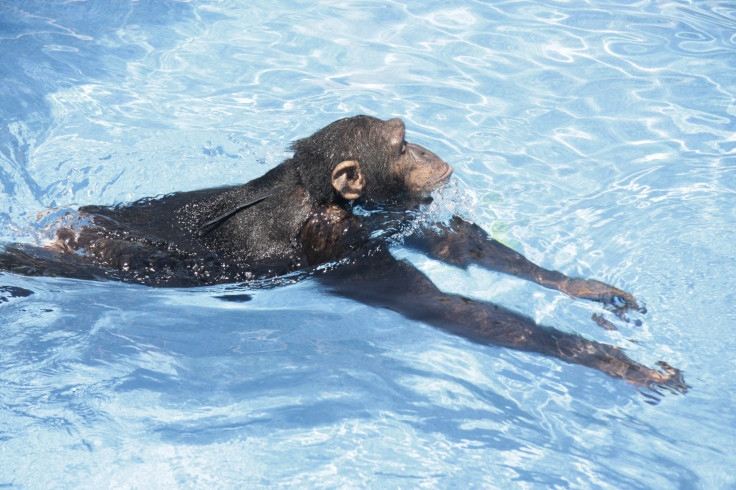How Do Apes Swim? More Of A Breaststroke Than A Doggy Paddle, Say Researchers
Researchers have documented for the first time the swimming and diving behavior of apes. Apes swim in a similar fashion to humans, a type of modified breaststroke, which is uncommon as other mammals prefer a dog-paddle.

The researchers observed a chimpanzee and an orangutan that were raised by humans and eventually learned how to swim and dive into the water. It was previously believed that apes were afraid of water and couldn’t swim, citing incidents of apes drowning in deep water within moats used to keep the animals within their zoo habitats.
Renato Bender, from the School of Anatomical Sciences at Wits University, and Nicole Bender, an evolutionary physician and epidemiologist from the Institute of Social and Preventive Medicine at the University of Bern, observed Cooper, a young chimp, learn how to dive underwater and swim. The researchers recorded Cooper's diving ability after the curious chimp traveled to the deeper section of the pool that was roped off.
Within minutes, Cooper was diving two meters, 6.6 feet, underwater much to the surprise of the researchers. Renato Bender said in a statement, “'It was very surprising behavior for an animal that is thought to be very afraid of water.”
Cooper also learned how to swim after a few weeks but the crown of “best swimming ape” belongs to Suryia, an orangutan that lives in a private zoo in South Carolina. The researchers were able to record Suryia swim up to 12 meters, 39 feet, without help. Cooper and Suryia swim a modified butterfly stroke with a kicking motion similar to a “frog kick.” The researchers note Cooper kicks both legs at the same time while Suryia has an alternate kicking motion.
The reason why these apes, along with humans, perform a breaststroke instead of a dog-paddle like other mammals is due to evolutions. Swimming is instinctive for other mammals while humans, and apes, have to learn how to swim. Nicole Bender said that, despite apes being a well-researched subject, the swimming habits of apes have largely been ignored as a scientific topic and there were other reports of swimming apes. “We did find other well-documented cases of swimming and diving apes, but Cooper and Suryia are the only ones we were able to film. We still do not know when the ancestors of humans began to swim and dive regularly,” said Nicole Bender.
The researchers believe there is still much to be learned about apes and their relationship to water and swimming and their most recent research was published in the American Journal of Physical Anthropology.
© Copyright IBTimes 2024. All rights reserved.






















